Improve your skills 4.5-6.0
What is Improve your IELTS Writing Skills?
Improve your IELTS Writing Skills is a complete preparation course for students at score bands
4.5--6.00 preparing for the Academic Writing paper of the International English Language Testing
System. Through targeted practice, it develops skills and language to help you achieve a higher
IELTS score in the Academic Writing paper.
How can I use this book?
You can use Improve your IELTS Writing Skills as a book for studying on your own or in a class.
If you are studying on your own, Improve your IELTS Writing Skills is designed to guide you
step by step through the activities. This book is also completely self-contained: a clear and
accessible key is provided so that you can easily check your answers as you work through the
book. In addition, there is either a sample answer written by a student or a model answer written
by the authors to accompany each Task 1 and Task 2 question.
If you are studying as part of a class, your teacher will direct you on how to use each activity.
Some activities can be treated as discussions, in which case they can be a useful opportunity to
share ideas and techniques with other learners.
How is Improve your IELTS Writing Skills organized?
It consists of ten units based around topics which occur commonly in the real test.
Each unit consists of three sections:
'!ask 1: exercises and examples to develop skills and language for Task 1 questions.
'!ask 2: exercises and examples to develop skills and language for Task 2 questions.
Practice test: a complete Academic Writing paper based on the unit topic to practise the skills
learned.
Each Task 1 and Task 2 section is subdivided further into skills sections. These focus on specific
areas of relevance to each task.
In addition, there are Technique boxes throughout the book. These reinforce key points on how
to approach Academic Writing tasks.
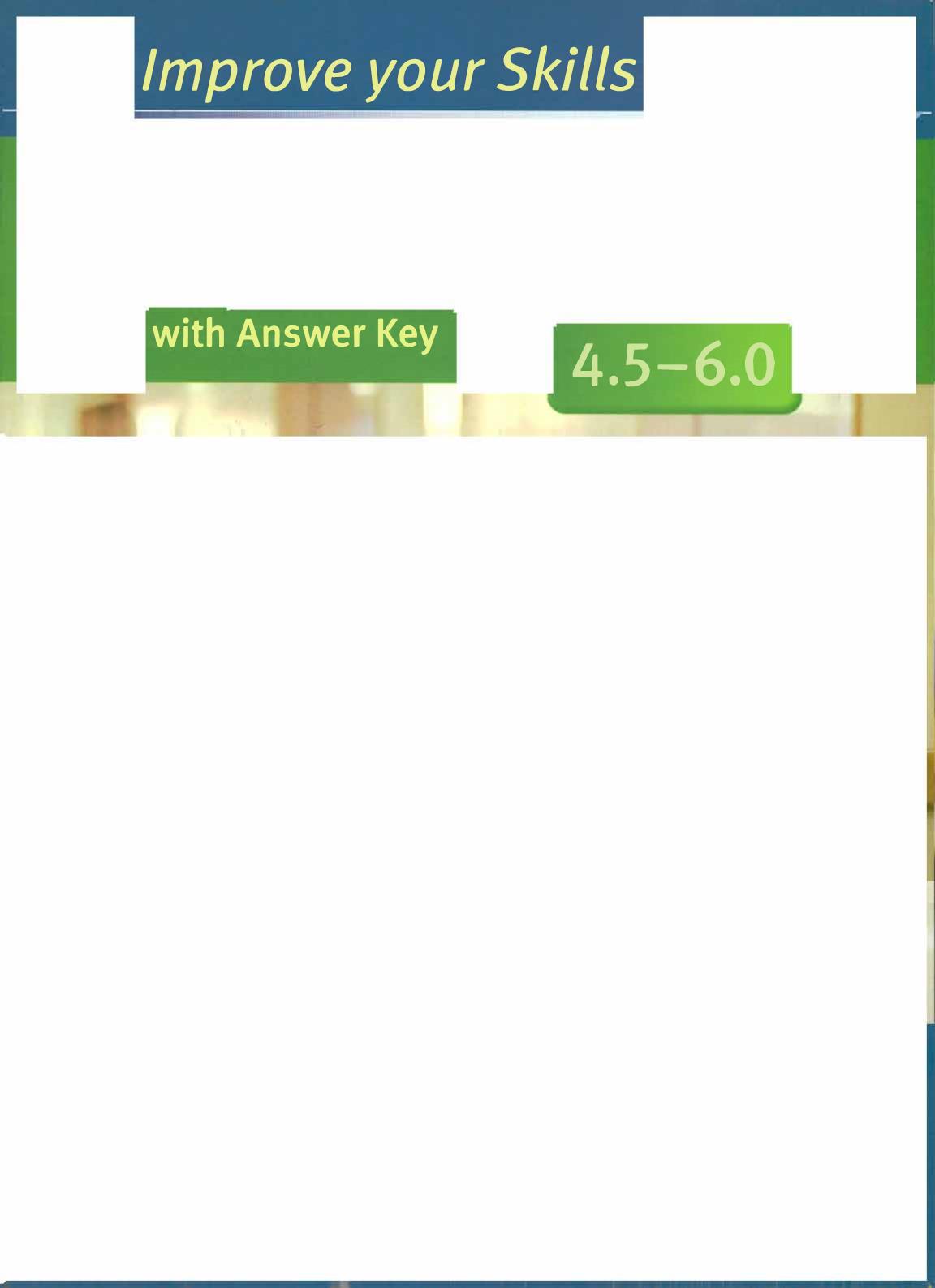
Trang 1
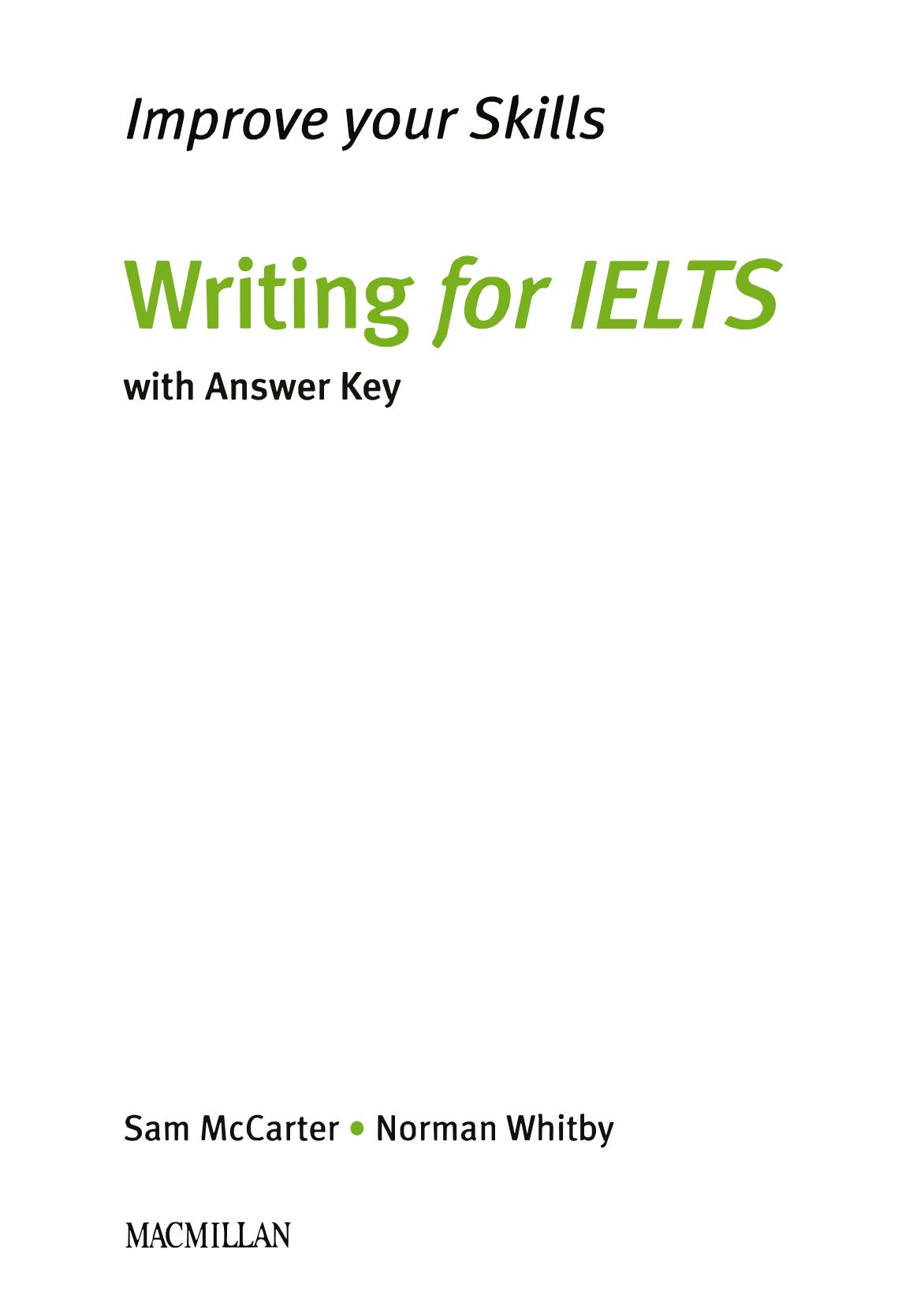
Trang 2
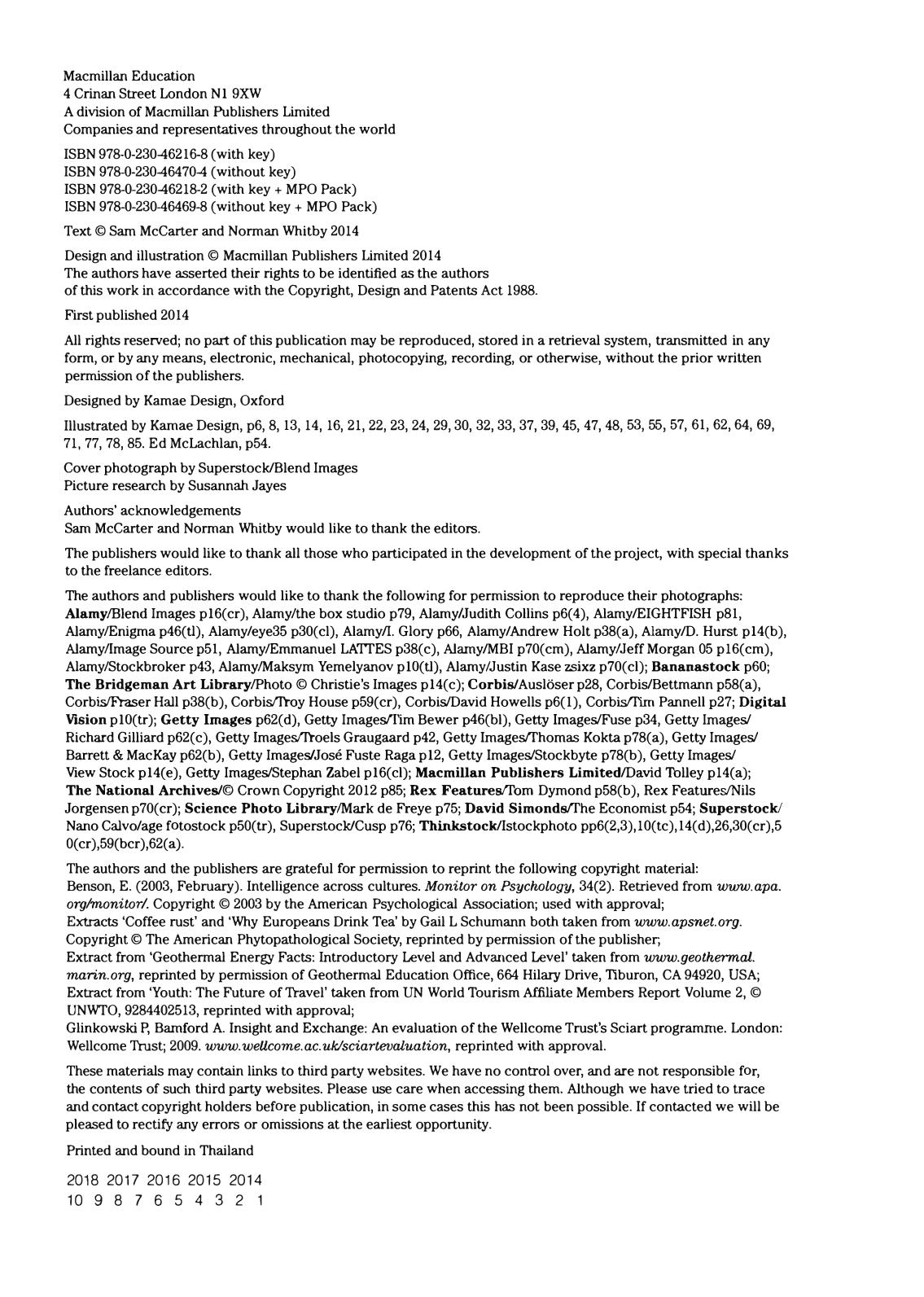
Trang 3
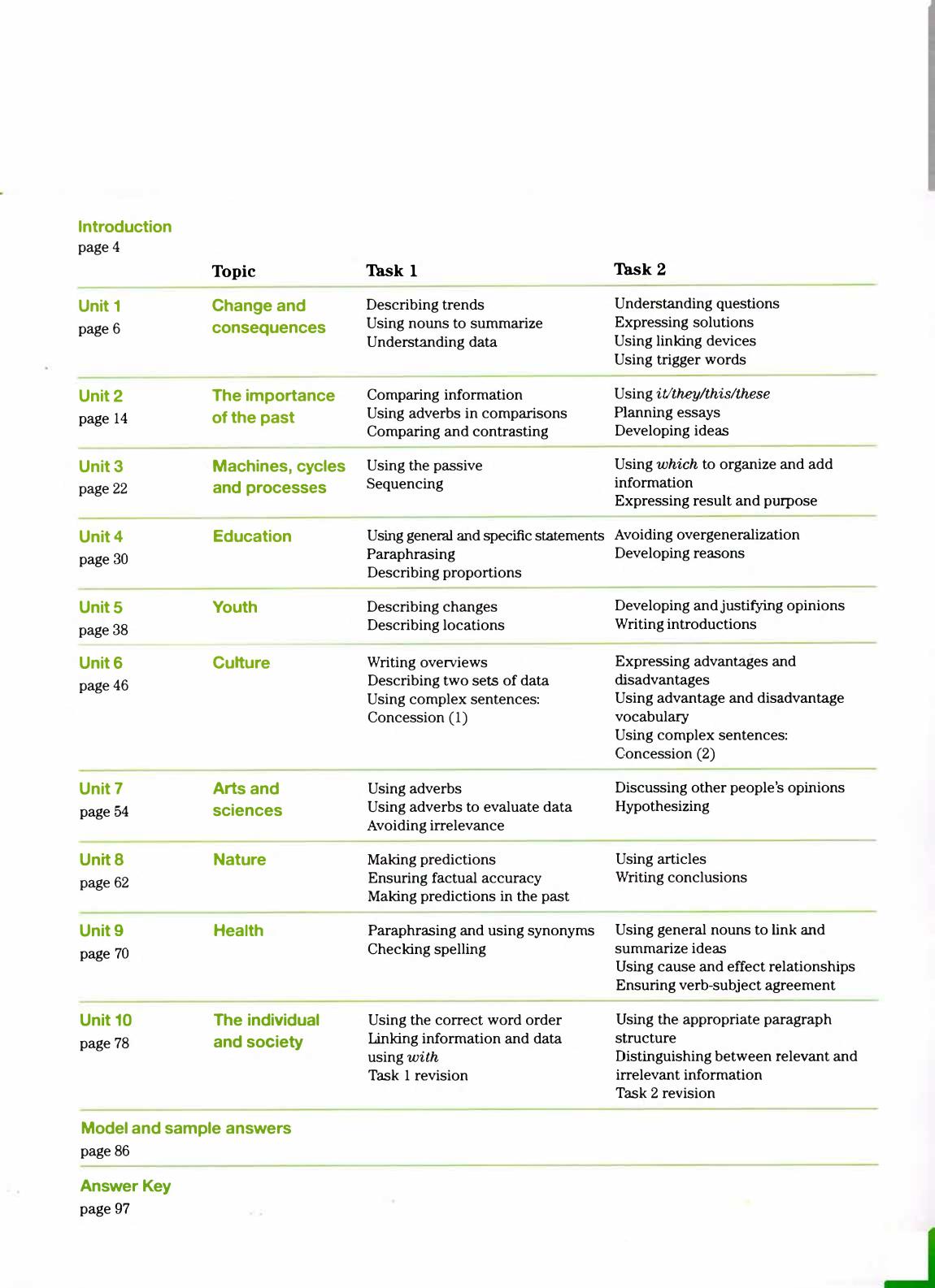
Trang 4
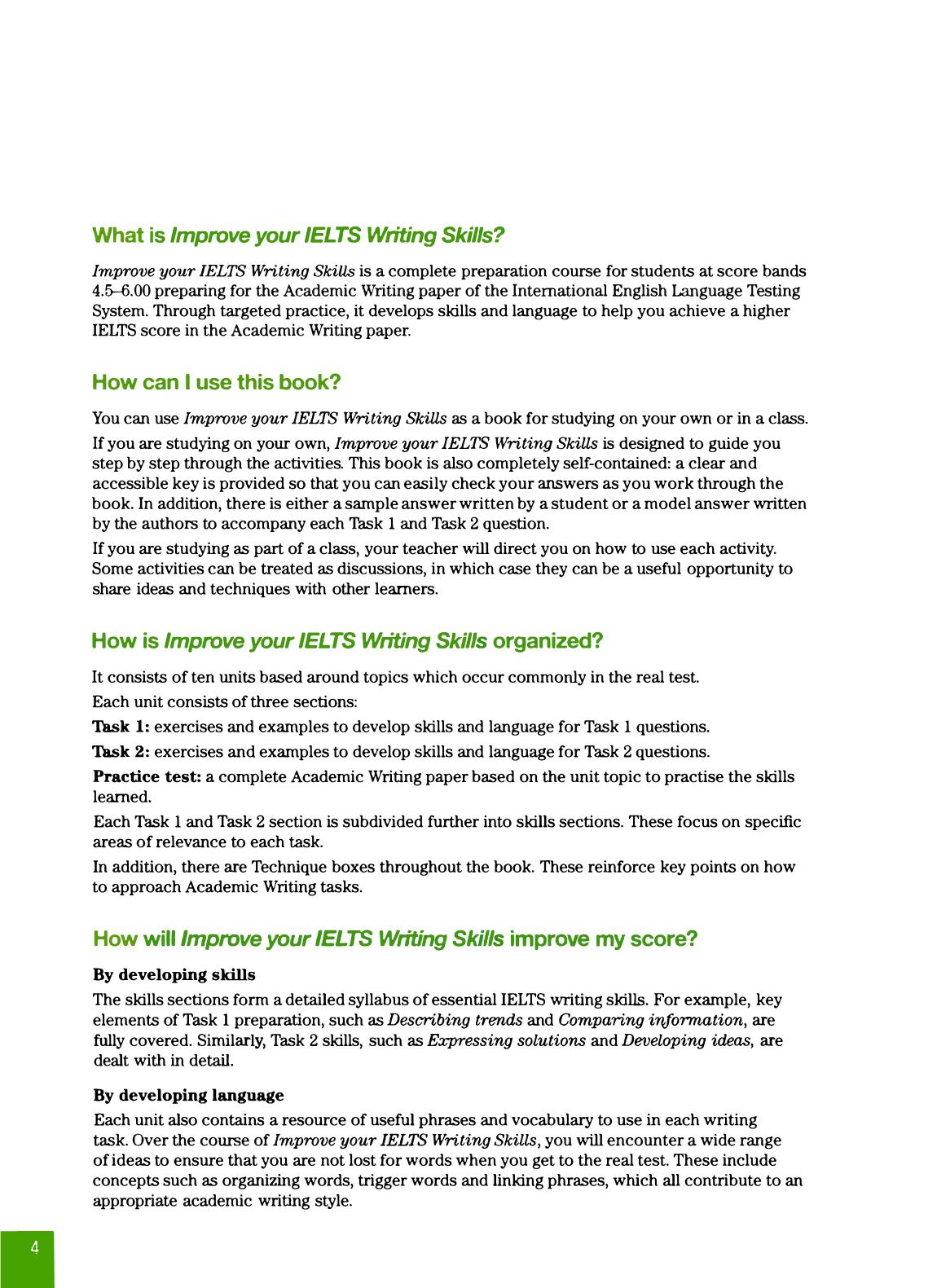
Trang 5
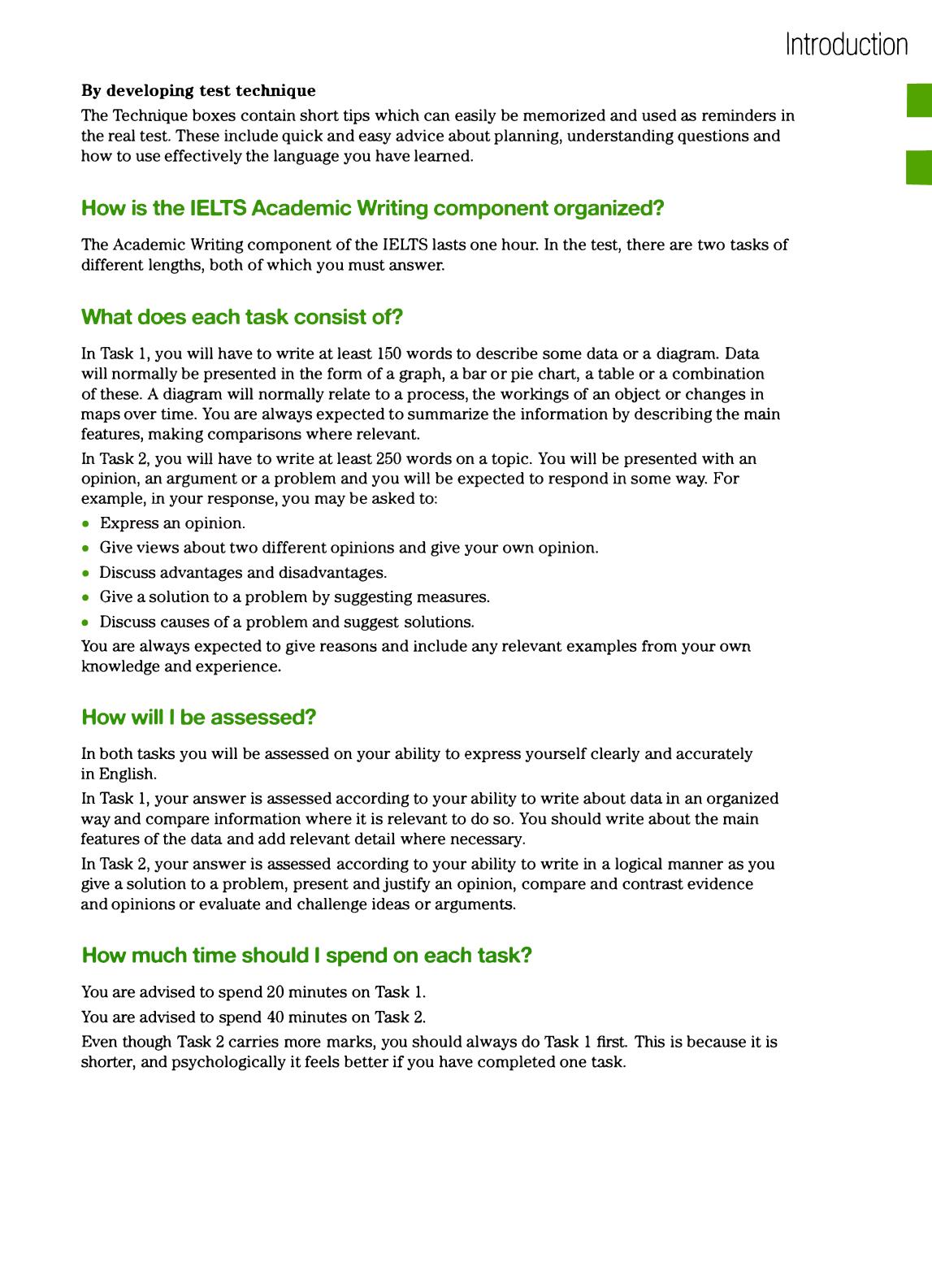
Trang 6

Trang 7

Trang 8
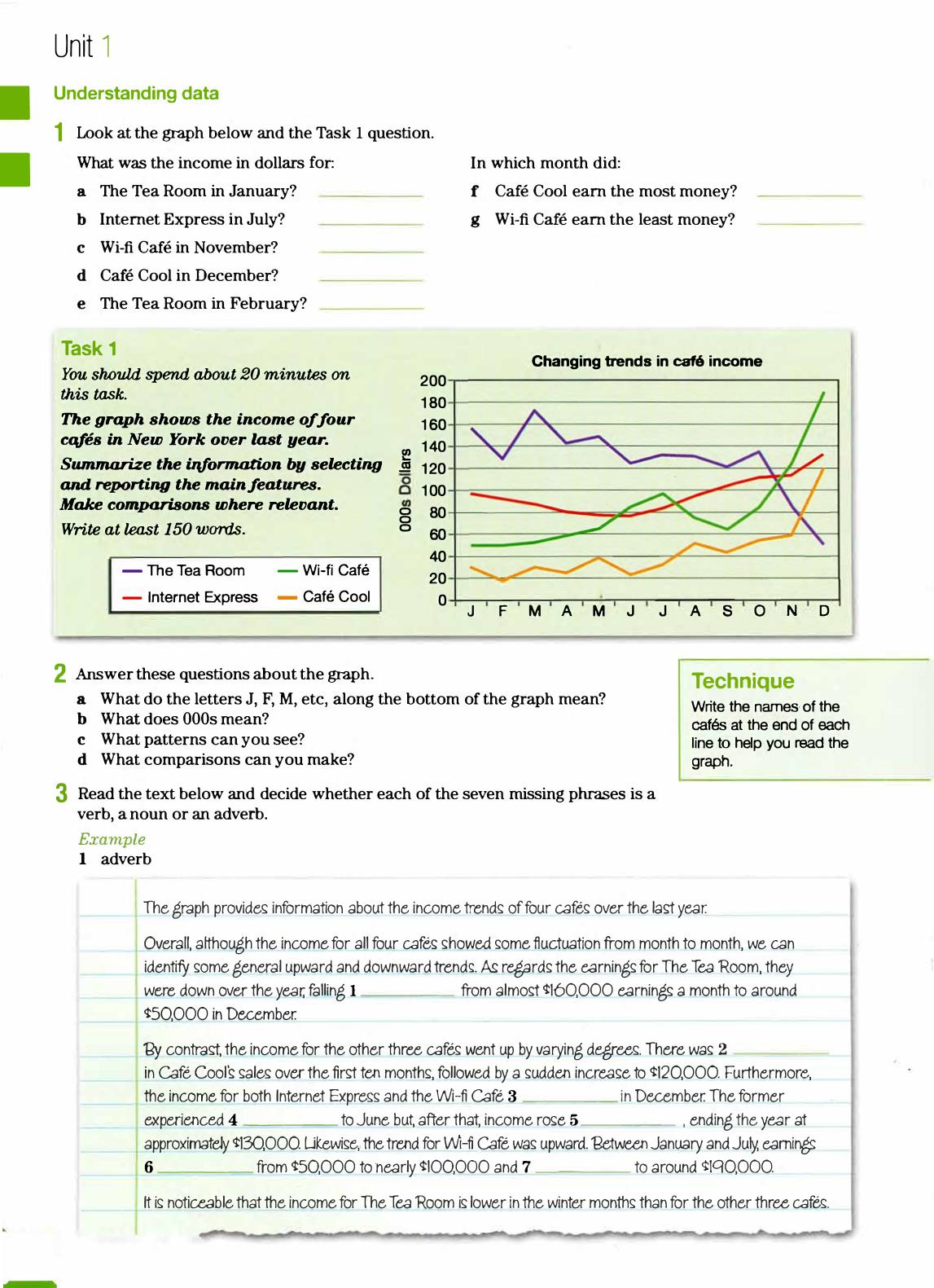
Trang 9
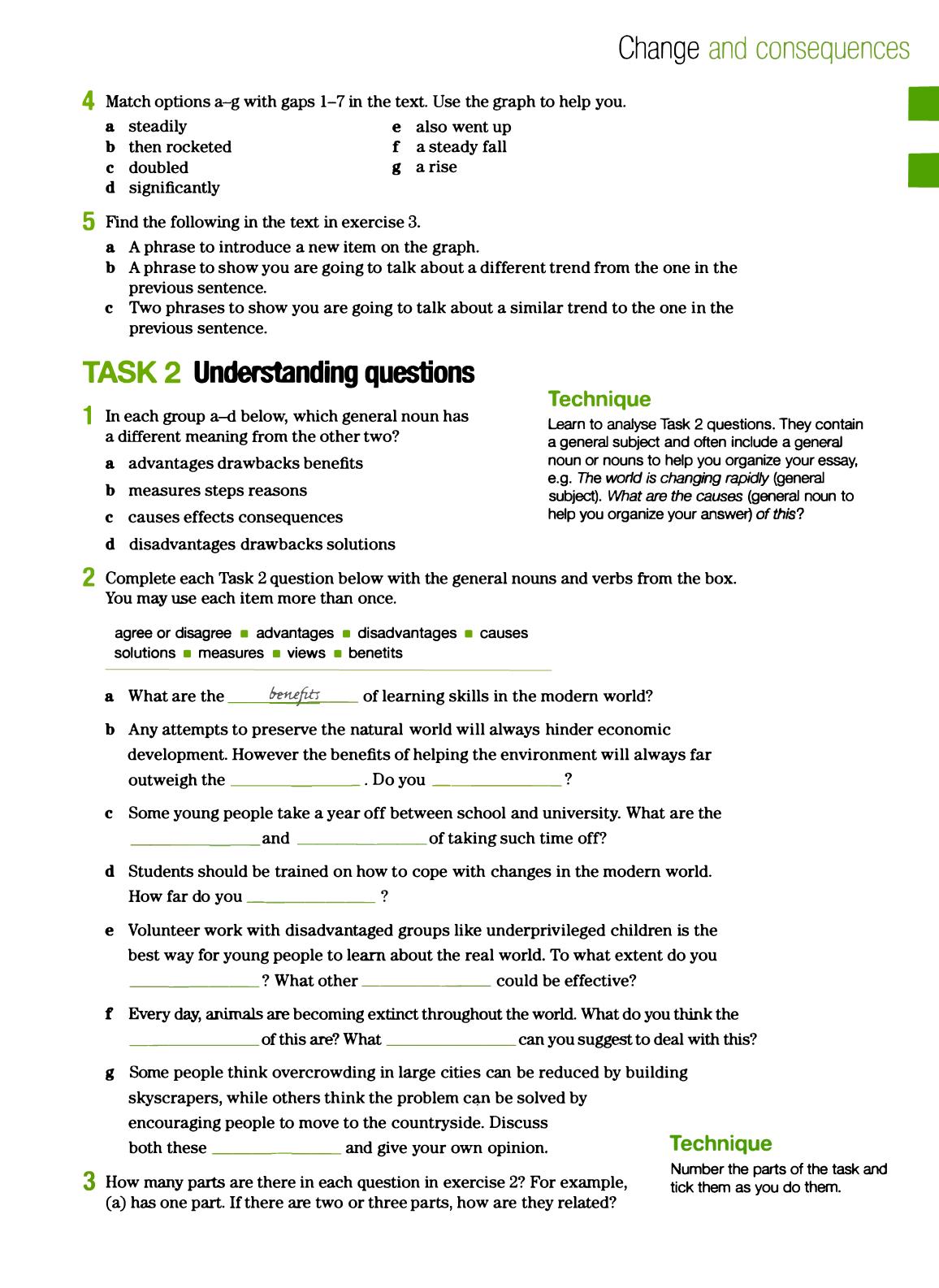
Trang 10
Tải về để xem bản đầy đủ
Tóm tắt nội dung tài liệu: Improve your skills 4.5-6.0
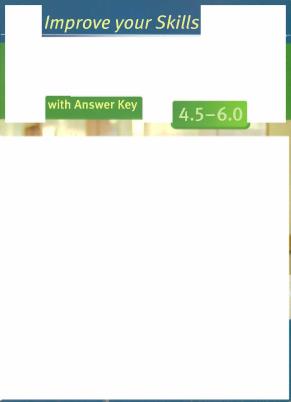
Improve your Skills wittii �raswer. Ke� "--1-B.a Improve your Skills Writing for IELTS with Answer Key Sam Mccarter• Norman Whitby MACMILLAN Macmillan Education 4 Crinan Street London Nl 9XW A division of Macmillan Publishers Limited Companies and representatives throughout the world ISBN 978-0-230-46216-8 (with key) ISBN 978-0-230-46470-4 (without key) ISBN 978-0-230-46218-2 (with key+ MPO Pack) ISBN 978-0-230-46469-8 (without key+ MPO Pack) Text© Sam McCarter and Norman Whitby 2014 Design and illustration© Macmillan Publishers Limited 2014 The authors have asserted their rights to be identified as the authors of this work in accordance with the Copyright, Design and Patents Act 1988. First published 2014 All rights reserved; no part of this publication may be reproduced, stored in a retrieval system, transmitted in any form, or by any means, electronic, mechanical, photocopying, recording, or otherwise, without the prior written permission of the publishers. Designed by Kamae Design, Oxford Illustrated by Kamae Design, p6, 8, 13, 14, 16, 21, 22, 23, 24, 29, 30, 32, 33, 37, 39, 45, 47, 48, 53, 55, 57, 61, 62, 64, 69, 71, 77, 78, 85. Ed McLachlan, p54. Cover photograph by Superstock/Blend images Picture research by Susannah Jayes Authors' acknowledgements Sam McCarter and Norman Whitby would like to thank the editors. The publishers would like to thank all those who participated in the development of the project, with special thanks to the freelance editors. The authors and publishers would like to thank the following for permission to reproduce their photographs: Alamy/Blend images pl6(cr), Alamy/the box studio p79, Alamy/Judith Collins p6(4), Alamy/EIGHTFISH p81, Alamy/Enigma p46(tl), Alamy/eye35 p30(cl), Alamy/1. Glory p66, Alamy/Andrew Holt p38(a), Alamy/D. Hurst pl4(b), Alamy/lmage Source p51, Alamy/Emmanuel LATTES p38(c), Alamy/MBI p70(cm), Alamy/Jeff Morgan 05 p16(cm), Alamy/Stockbroker p43, Alamy/Maksym Yemelyanov plO(tl), Alamy/Justin Kase zsixz p70(cl); Bananastock p60; The Bridgeman Art Library/Photo© Christie's Images pl4(c); Corbis/Ausloser p28, Corbis/Bettmann p58(a), Corbis/Fraser Hall p38(b), Corbis/Troy House p59(cr), Corbis/David Howells p6(1), Corbisfl'im Pannell p27; Digital VISion plO(tr); Getty Images p62(d), Getty images/l'im Bewer p46(bl), Getty images/Fuse p34, Getty Images/ Richard Gilliard p62(c), Getty lmages/Troels Graugaard p42, Getty Images/Thomas Kokta p78(a), Getty images/ Barrett & MacKay p62(b), Getty images/Jose Fuste Raga pl2, Getty images/Stockbyte p78(b), Getty Images/ View Stock pl4(e), Getty images/Stephan Zabel pl6(cl); Macmillan Publishers Limited/David Tolley p14(a); The National Archives/© Crown Copyright 2012 p85; Rex Features/Tom Dymond p58(b), Rex Features/Nils Jorgensen p70(cr); Science Photo Library/Mark de Freye p75; David Simonds/The Economist p54; Superstock/ Nano Calvo/age fotostock p50(tr), Superstock/Cusp p76; Thlnkstock/Istockphoto pp6(2,3),10(tc),14(d),26,30(cr),5 0( cr),59(bcr),62(a). The authors and the publishers are grateful for permission to reprint the following copyright material: Benson, E. (2003, February). Intelligence across cultures. Monitor on Psychology, 34(2). Retrieved from www.apa. orglmonitorl. Copyright © 2003 by the American Psychological Association; used with approval; Extracts 'Coffee rust' and 'Why Europeans Drink Tea' by Gail L Schumann both taken from www.apsnet.org. Copyright © The American Phytopathological Society, reprinted by permission of the publisher; Extract from 'Geothermal Energy Facts: Introductory Level and Advanced Level' taken from www.geothermaJ.. marin.org, reprinted by permission of Geothermal Education Office, 664 Hilary Drive, Tiburon, CA 94920, USA; Extract from 'Youth: The Future of Travel' taken from UN World Tourism Affiliate Members Report Volume 2, © UNWTO, 9284402513, reprinted with approval; Glinkowski P, Bamford A. Insight and Exchange: An evaluation of the Wellcome Trust's Sciart programme. London: Wellcome Trust; 2009. www.weUcome.ac.uklsciartevaJ.uation, reprinted with approval. These materials may contain links to third party websites. We have no control over, and are not responsible for, the contents of such third party websites. Please use care when accessing them. Although we have tried to trace and contact copyright holders before publication, in some cases this has not been possible. If contacted we will be pleased to rectify any errors or omissions at the earliest opportunity. Printed and bound in Thailand 2018 2017 2016 2015 2014 10 9 8 7 6 5 4 3 2 1 Introduction page 4 Topic Unit 1 Change and page 6 consequences Unit2 The importance page 14 of the past Unit3 Machines, cycles page 22 and processes Unit4 Education page 30 Unit5 Youth page 38 Unit6 Culture page 46 Unit7 Arts and page 54 sciences Unite Nature page 62 Unit ... CD player - DVD player - Mobile phoneWrite at [,east 150 words. - Internet connection United Kingdom 0-+-----..------.----�----�----�----..------l 1994/95 1996/97 1998/99 2000/01 2002/03 2004/05 2006/07 2008 Task 1 Checklist 1 Paraphrase the rubric in the introduction, i.e, change the words and the structure where possible. 5 Use nouns and verbs to describe the trends. 6 Write at least 150 words. 2 Write an overview after your introduction or at the end. 3 Include all the data at the beginning and ends of lines. 4 Use linking devices. Task2 You slwuld spend about 40 minutes on this task. Write about the following topic: 7 Use at least three paragraphs. 8 Check your answer for mistakes. People oftenfind it d;JJlcult to adapt to new situations in their lives. Why do you think this is? What measures can you suggest to make it easier? Give reasons for your answer and include any relevant examples from your own knowledge or experience. Write at /,east 250 words. ■ 1■ importance of the past Ballpoint pen, Laszlo Biro a Tin can patented by Peter Durand Safety pin, Walter Hunt .;. First mercury thenmometer, Gabriel Fahrenheit e Paper money in China ing itlthefltliisl.these anning essays evelo ing 1cleas TASK 1 Comparing infonnation 1 The pictures and text show some inventions and who invented them. Answer the questions. a Which is the oldest invention? b Which is the most recent invention? c Which do you think are the most and least important inventions? d What other important historical inventions are not included here? e What do you think are the three most effective inventions in recent years? 2 The chart shows the results of a survey about the most important inventions in the last 300 years. Answer the questions. Most important inventions in the last 300 years ,_ __________________ ...,■ Male Bicycle Car Tablet Mobile phone a What is the most noticeable thing about the chart? b What voting patterns can you see for females? c What voting patterns can you see for males? d Do you agree with the survey results? Why/Why not? ■ Female Radio Internet TV Technique Circle and number important data on the chart that you are going to write about. Group data that you want to write about together or compare (e.g. by labelling them 2a, 2b, 2c). The importance of the past 3 Complete sentences a-j about the chart in exercise 2 on page 14, using the structures in the Technique box. a More females _______ males chose the bicycle. b The bicycle was more than any other invention. c The car was popular among females than males. d _______ invention among both sexes was the TV. e _______ women than men voted for the mobile phone. f _______ invention among both sexes was the bicycle. g _______ males than females picked the radio. h The tablet was _______ for women than for men. i More people selected the bicycle _______ any other invention. j The TV was _______ popular than any other invention. Technique Use a range of structures to make comparisons. Read these examples that describe the chart in exercise 2. Examples • More males than females chose the TY. (more + noun + than) • Fewer females than males chose the TY. (fewer + noun + than) • The lV was more popular among males than females. (more/less + adjective+ than) • The most popular form of communication was the Internet. (the most/least + adjective) 4 Rewrite the sentences in exercise 3 using the following words: (a) fewer males (b) the most (c) more popular (d) less popular (e) fewer (f) more ... than (g) more (h) more (i) the most (j) the least Example a Fewer males than females chose the bicycle. 5 Compare male and female attitudes to bicycles, cars, tablets, mobile phones and the Internet. Examples Almost as many females as males chose the tablet Not as many males as females chose the radio. Technique Compare information by using as many ... as when numbers are very close, or by using not as many ... as. Read the examples in exercise 5. 6 Make comparative sentences based on notes a-g below and the chart in exercise 2. Use the passive or active form of the verb in italics. Examples females/males/select/the bicycle More females than males selected the bicycle. males/females/select/the bicycle Fewer males than females selected the bicycle. the bicycle/choose/females/males The bicycle was chosen by more females than males. a males/females/choose/the car b women/men/select/the mobile phone c the Internet/choose/males/females d females/males/pick/the radio e males/females/pick/the radio f the tablet/choose/females/males g the bicycle/select/males/females ■ ■ • Unit 2 Using adverbs in comparisons 1 Read the examples. Then underline the adverbs in sentences a-i. a Slightly more women than men voted for the bicycle. b In the past, considerably more people lived in the countryside than towns. c Many more people can use a computer today than thirty years ago. d Substantially less time is now spent doing housework than before. e There are significantly fewer people now working in manufacturing than in the past. f Sports programmes are watched by practically as many people now as in previous years. g The exhibition about cinema attracted far fewer visitors than expected. h Illiteracy is much less common than in previous generations. i Nearly as many children as adults watch programmes about ancient history. 2 Which adverbs in exercise 1 mean: a almost? b a lot? c just a few? 3 Add suitable adverbs to the sentences you wrote in exercise 6 on page 15. Comparing and contrasting 1 What kinds of clubs do people join? Do you belong to any clubs? 2 What kinds of clubs are shown in the photos below? Tech ique Add adverbs to comparisons, such as significantly (more) or almost (as many) to make them more precise. E:ra"'nples • Significantly more people voted for the bicycle than the other inventions. • The bicycle was chosen by almost as many males as females. 3 Find the clubs that you named in exercise 1 on the chart opposite. Answer the following about the bar chart. Membership of various clubs a What does the bar chart provide information about? b What could the numbers on the left relate to? c What do you think the words along the bottom of the chart relate to? d What do the numbers in the box in the top left of the chart refer to? e Is there a time reference for the graph? 70�-----------------------, 60 ■ 2�30 ■ 45-65 I-----.----------; 50-+----.--------1 40 30 20 10 0-+-.__---"-...---'----'-........ ---......... --"--,-----------._._-�"-t The importance of the past 4 Make at least three questions about the data. Then ask your questions to a partner. Example Which club or society has the most people aged 20-30? 5 Match sentence beginnings 1-6 with endings a-f to form correct sentences about the chart. 1 The arts and crafts club has the greatest number of 20-30 year-olds, 2 Only 25 people from the younger age group are members of the historical club, 3 Some clubs are clearly more popular with one of the age groups, 4 The fitness and social clubs have slightly more members in the younger age group, 5 1n general, the 20-30 year-olds are more actively involved in clubs 6 The fitness and social clubs attract a broader range of people a whereas the archaeological club is equally popular with both. b in comparison with the historical club. c but it is one of the least popular clubs with the older age group. d compared with the older age bracket. e while the figure for 45-65 year-olds is about 50. f although they are fairly popular with both age groups. 6 In which of the sentences in exercise 5 could the ending a-f come first? Which connecting words in italics are followed by a noun phrase only? 7 Read the following description of the chart you looked at in exercise 3. In 1-6, two options are possible and one is incorrect. Delete the incorrect option. The chart provides infurmation about how two age groo� participate in several dubs at a centre fur adults:. We can see from the data that the archaeological, fitne� and social dubs are popular with both older and f younger people. 1 Llo/hilell-loweve,r/fly contrar;t, the hi�orical and arn and crafu societies clearly appeal more to one of the age groups. In the hi�orical society. 50 of the memb� are between 45 and 65, 2 but/whilelhowevathere are only 25 from the younger age group. For the arn and crafts society. the pattern is rev�ed. There are about 60 memb� aged between 20 and 30, 3 but/whereas: in comparis:on with the number of people in the 4 5 to 65 age group is 4 far/s:fi$7tlyl cons:iderahly lower The fitne� and social clubs are popular with both age groups, 5 howeve,rfbut/afthough there are slightly fewer older people. Memb�hip of the archaeological society �ands at 45 for both groups. In general, the younger age group are 6 s:ignificantly/almoi;;t/noticeably more involved in the various sodetie-s than the 45-65 year-olds. ■ ■ Unit 2 ■ TASK 2 Using it/they/this/these ■ 1 Read the text opposite written by astudent as part of a Task 2 answer. Replace the words in italics with it, they, this or these. Archaeologists, for example, help us to learn about the past. Archaeologists look for evidence in artefacts like pots and jewellery. Pots and jewellery reveal a lot of information about our ancestors. Revealing information about the past is very useful, but the information is still quite limited. 2 Match 1-4 with a-d to explain how to use it, they, this and these. 1 It and this refer to a nouns and phrases at the end of the previous sentence. 2 They and these refer to b plural nouns. 3 This and these are often used to refer to c situations and processes. 4 This can also refer to d singular nouns. 3 Underline the exact text which it, they, this and these refer to in sentences a-h. The first one has been done for you. a History teaches children not just facts, but a range of skills. For example, they can learn how to analyse material, do basic sorting and research. b Old buildings help create a more relaxing environment in cities than concrete office blocks. This makes them more pleasant to work and live in. c Studying history may trigger an interest in other subject areas. This, in turn, may lead to different hobbies. d Built-up areas can be made more attractive by adding monuments and statues. These can then enrich people's lives considerably. e Governments should provide more money to preserve historical sites. By doing this, our heritage would be saved for future generations. f Tradition does not hold us back as some people believe. In fact, it helps us to build the future. g Schools and colleges need to emphasize history and related subjects as these will help give them a wider view of the world. h The Internet and computers can be used to preserve the past. For example, they can be used by children to do basic research and store images. 4 Complete sentences a-g with it, they, this or these. Some answers have more than one option. a If the past is to be preserved, _______ must be done by using modern technology. b The art and language of a country represent its history, so it is important that _______ are both preserved. c The primary role of advertising is to encourage the public to replace the old with the new. ------- is called progress by some people. d History broadens the minds of most people who study _______ , but ------- also has the potential to narrow the minds of some. e History should be given more emphasis in school, as _______ will help children to understand better the world they live in. f If history is emphasized more in schools, _______ will lead to a better understanding of the world. g The past informs us of the present and the future, but few people are sufficiently aware of The importance of the past 5 Complete each blank space in the paragraph below with a sentence of your own. Begin each sentence using either it, they, this or these to refer back to the phrases in bold. One of the most important developments in technology over the past decades has been the Internet. l _____________ Reading a webpage is, however, not like reading a book. We read webpages much more quickly and then make an immediate connection to something on another page. 2 ____________ Books are also gradually being replaced bye-readers. 3 ___________ _ Planning essays 1 Read the historical facts in a-f below. Rank the events 1-6 according to how important you think they were in human history (1 = most important; 6 = least important). What other events would you add to the list? a In 1792, France abolished the monarchy and replaced it with the first republic. b In 1953, Francis Watson and James Crick described the structure and importance of DNA. c In October 1492, Christopher Columbus set foot in the Americas. d In 1885, Karl Benz built and patented the first automobile. e In 1983, a computer system connecting universities was created, which later became the Internet. f In the ninth century, gunpowder was first invented and used by the Chinese. 2 Read the Task 2 essay question below. It is sometimes said that hist,ory never repeats itself, yet there is much in it which is rei,evant to our modern world. In what ways can the study of hist,ory help us today? Decide which of points a-g are relevant to the answer to this question. a There is often uncertainty about what really happened with regard to well-known historical events. b Studying other historical periods gives insights into different ways of life. c We can learn about the recent past by asking older family members. d History involves investigation and interpretation, so its study develops thinking skills. e Learning about conflicts in the past can teach us how to avoid them in future. f History is a more difficult area of study than most people imagine. g The past can often provide explanations for the situations we face today. 3 Read the statement below and use the trigger words in a-d to develop this point. The first one has been done for you. Refer to Unit 1 page 12 for more examples of similar phrases. Studying other historical periods gives insights into different ways of life. For example, students can investigate the way in which people lived in ancient limes. such as ______ _ As a result, ______ _ Therefore, ______ _ Furthermore, ______ _ 4 Look back at the other relevant sentences you chose in exercise 2 above. Develop those ideas in the same way using trigger words. Then write out your ideas in a paragraph. ■ ■
File đính kèm:
 improve_your_skills_4_5_6_0.pdf
improve_your_skills_4_5_6_0.pdf

